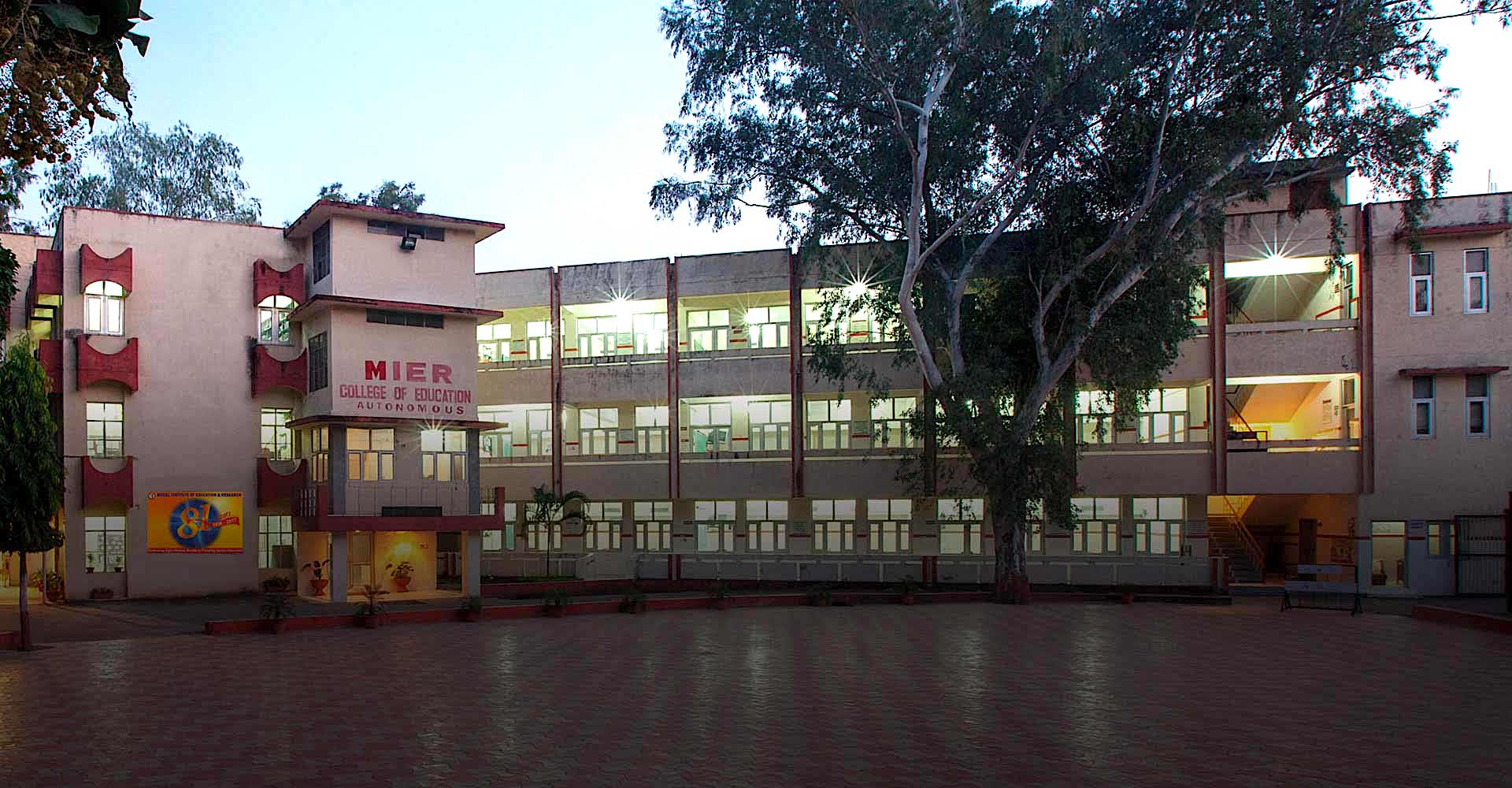Problem Solving in Chemistry: Example of Neutralization Titrations
DOI:
https://doi.org/10.52634/mier/2021/v11/i2/1955Keywords:
Analytical Chemistry, Neutralization Titration, Problem SolvingAbstract
Problem-solving is an important skill in analytical chemistry. This study aims to determine how chemistry teacher candidates use volumetric analysis problems and reveal the errors made. The research employs a descriptive survey model. The sample of the study consists of seven chemistry teacher candidates studying in the chemistry teaching programme. Questions requiring comparing the volume spent in NaOH and HNO3, H2SO4, and H3PO4 titrations were asked within the scope of the study. The solution to the problem and explanations were recorded in a video. The results show that there are problems in determining the volume of NaOH. Many students wrote the titration reactions correctly, but there were problems with the effect values. It is noteworthy that those who made mistakes did not understand the first step of the problem. The students can prevent such mistakes with the help of a diagram summarizing the steps to be followed in the titration process.
Downloads
Metrics
Downloads
Published
How to Cite
Issue
Section
License
Copyright (c) 2021 Fatma Alkan

This work is licensed under a Creative Commons Attribution 4.0 International License.
The articles published in the MIER Journal of Educational Studies, Trends and Practics (MJESTP) are distributed under the terms of the Creative Commons Attribution License (CC BY 4.0), which permits unrestricted use, distribution, and reproduction in any medium, provided the original author and source are credited.
- Copyright on any open access article in the MIER Journal of Educational Studies, Trends and Practics (MJESTP) published by Model Institute of Education and Research (MIER) is retained by the author(s).
- Author(s) grant MIER a license to publish the article and identify himself/herself/themselves as the original publisher.
- Authors also grant any third party the right to use the article freely as long as its integrity is maintained and its original authors, citation details and publisher are identified.
- The Creative Commons Attribution License 4.0 formalizes these and other terms and conditions of publishing articles.
References
Alam, G. M., Oke, O. K., & Orimogunje, T. (2010). Volumetric analysis and chemistry students’ performance: Combined influence of study habit, physiological and psychological factors. Scientific Research and Essays, 5(11), 1325-1332.
Anamuah-Mensah, J. (1981). Student difficulties with volumetric analysis. Unpublished Master of Science Thesis, The University of British Columbia, The Faculty of graduate studies, department of mathematics and science education.
Andrade, H. L., & Heritage, M. (2017). Using formative assessment to enhance learning, achievement, and academic self regulation. New York: Routledge.
Arikawa, Y. (2001). Basic education in analytical chemistry. Analytical Sciences. The Japan Society for Analytical Chemistry, 17, 571-573.
Awaliah, N. Y., & Ikhsan, J. (2021). Effect of problem based learning on student’s metacognitive ability and science process skills. Advances in Social Science, Education and Humanities Research, 528, 195-200. https://doi.org/10.2991/assehr.k.210305.030
Aydogdu, C. (2000). A comparison of chemistry instruction enriched with experiments and traditional problem solving activities of chemistry lesson achievement. Hacettepe University Journal of Education, 19, 29- 31.
Berry, A. (2015). Qualitative inorganic analysis. UK: Cambridge University Press.
Bilgin, I. (2005). The effect of different problem-solving strategies on university students’ problem-solving achievements of quantitative problems in chemistry. Educational Sciences: Theory & Practice, 5(2), 628-635.
Chandrasegaran, A. L., Treagust, D. F., Waldrip, B. G., & Chandrasegaran, A. (2009). Students’ dilemmas in reaction Stoichiometry problem- solving: deducing the limiting reagent in chemical reactions. Chemistry Education Research and Practice, 10, 14-23.
Christensen, C. R., Garvin, D. A., & Sweet, A. (1991). Education for judgement. the artistry of discussion leadership. Boston: Harvard Business School.
Cohen, J., Kennedy-Justice, M., Pai, S., Torres, C., Toomey, R., Depierro, E., & Garafalo, F. (2000). Encouraging meaningful quantitative problem solving. Journal of Chemical Education, 77(9), 1166-1173. https://doi.org/10.1021/ed077p1166
Cohen, L., Manion, L., & Morrison, K. (2007). Research methods in education (6th ed.) (and others, Ed.). Routledge/Taylor & Francis Group.
Cracolice, M. S., Deming, J. C., & Ehlell, B. (2008). Concept learning versus problem solving: A cognitive difference. Journal of Chemical Education, 85(6), 873-878. https://doi.org/10.1021/ed085p873
Derman, A., Kayacan, K., & Kocak, K. (2016). The investigation of chemistry questions asked in free boarding and scholarship examination for high school level in the context of algorithmic and conceptual question type. Gaziantep University Journal of Social Sciences,15(1),1-14. https://doi.org/10.21547/jss.256740
Duncan, I. M., & Johnstone, A. H. (1973). The Mole Concept. Education in Chemistry. Education in Chemistry, 10, 213-214.
Fach, M., Boer, T. D., & Parchmann, I. (2007). Results of an interview study as basis for the development of stepped supporting tools for stoichiometric problems. Chemistry Education Research and Practice, 8, 13-31. https://doi.org/10.1039/B6RP90017H
Freitas, A. P. D., & Campos, A. F. (2021). Website for scientific dis- semination of research on problem-based learning with high school chemistry teachers: Contexts of an investigation. Research, Society and Development, 10(6), 1-17. https://doi.org/10.33448/rsd-v10i6.15757
Gabel, D. L. (1993). Use of the particle nature of matter in developing conceptual understanding. Journal of Chemical Education, 70, 193-194. https://doi.org/10.1021/ed070p193
Gegios, T., Salta, & Koinis, S. (2017). Investigating high-school chemical kinetics: the Greek chemistry textbook and students’ difficulties. Chemistry Education Research and Practice, 18, 151-168. https://doi.org/10.1039/C6RP00192K
Glass, G. V. (1976). Primary, secondary, and meta-analysis of research. Educational Researcher, 5(10), 3-8.
Gros, N. (2019). Two different approaches to an analytical chemistry laboratory practical: wider and shallower or narrower and deeper? Analytical and Bioanalytical Chemistry, 411, 5923-5928. https://doi.org/10.1007/s00216-019-02017-4
Guerrero, G. E., Jaramillo, C. A., & Meneses, C. A. (2016). Mmacutp: Mobile application for teaching analytical chemistry for students on qualitative analysis. In Proceedings of the International Conference on Interactive Mobile Communication, Technologies and Learning (p. 50-54). Piscataway, NJ: IEEE.
Hafsah, T., Hasmin, R., Ismail, Z., Jusoff, K., & Yin, Y. K. (2014). The influence of students’ concept of mole, problem representation ability and mathematical ability on stoichiometry problem solving. Social Sciences and Scientific Studies, 21(1), 3-21.
Hayes, J. (1981). The complete problem solver. Hillsdale, NJ: Erlbaum. Heyworth, R. M. (1998). Quantitative problem solving in science: Cognitive factors and directions for practice. Education Journal, 26(1), 13-29.
Ijirana, I., & Supriadi, S. (2018). Metacognitive skill profiles
of chemistry education students in solving problem at low ability level. Jurnal Pendidikan IPA Indonesia, 7(2), 239-245. https://doi.org/10.15294/jpii.v7i2.14266
Johnstone, A. H. (1980). Chemical education research: Facts, findings, and consequences. Chemical Society Reviews, 9(3), 365-380. https://doi.org/10.1039/CS9800900365
Johnstone, A. H., Morrison, T. I., & Sharp, D. W. A. (1971). Topic difficulties in chemistry. Education in Chemistry, 6(8), 212-213. https://doi.org/10.1039/CS9800900365
Karaer, H. (2020). Opinions of teacher candidates on the use of flowcharts in teaching of quantitative analysis problems. Pamukkale University Journal of Education, 50, 201-225. https://doi.org/10.9779/pauefd.498647
Kimberlin, S., & Yezierski, E. (2016). Effectiveness of inquiry-based lessons using particulate level models to develop high school students’ understanding of conceptual stoichiometry. Journal of Chemical Education,93. https://doi.org/10.1021/acs.jchemed.5b01010
Lawson, A. E., Lawson, D. I., & Lawson, C. A. (1984). Proportional rea- soning and the linguistic abilities required for hypothetico-deductive reasoning. Journal of Research on Science Teaching, 21(2), 119-131.
Lopez, E. J., Shavelson, R. J., Nandagopal, K., Szu, E., & Penn, J. (2014). Factors contributing to problem-solving performance in first-semester organic chemistry. Journal of Chemical Education, 91(7), 976-981. https://doi.org/10.1021/ed400696c
Lopez-Jimenez, P., Gil-Duque, G., & Garces-Gamez, Y. (2021). Real problem solving as a teaching strategy for physics education: Case study. Journal Pendidikan IPA Indonesia, 10(1), 15-23. https://doi.org/10.15294/jpii.v10i1.25669
Lyle, K. S., & Robinson, W. R. (2001). Teaching science problem solving: An overview of experimental work. Journal of Chemical Education, 78(9),1162-1163. https://doi.org/10.1002/tea.1013
Mcmills, L., Nyasulu, F., & Barlag, R. (2012). Comparing mass and volumetric titrations in the general chemistry laboratory. Journal of Chemical Education, 89(7).
Miles, M. B., & Huberman, A. M. (1994). Qualitative data analysis: An expanded sourcebook. (2nd ed). Thousand Oaks, CA: Sage.
Miranda-Castro, R., & De-Los-Santos-Álvarez, N. (2020). Engaging in analytical chemistry in review classes: Contests based on TV shows as fun evaluable checkpoints. Analytical and Bioanalytical Chemistry, 412,5891-5896. https://doi.org/10.1007/s00216-020-02495-x
Mujtaba, T., Sheldrake, R., & Reiss, M. J. (2020). Chemistry for all. reducing inequalities in chemistry aspirations and attitudes. England: Royal Society of Chemistry.
Nakhleh, M. (1992). Why some students don’t learn chemistry. Journal of Chemical Education, 69, 191-196. https://doi.org/10.1021/ed069p191
Nakiboglu, C., & Kalin, S. (2003). High school students’ difficulties about problem solving in chemistry courses I: According to experienced chemistry teachers. Kastamonu Education Journal, 11(2), 305-316.
Newell, A., & Simon, H. A. (1972). Human problem solving. Englewood Cliffs, NJ: Prentice Hall.
Norman, G. R., & Schmidt, H. G. (1992). The psychological basis of problem-based learning: a review of the evidence. Academic Medicine, 67, 557-565.
Polya, G. (1957). How to solve it. Garden City, NY: Doubleday and Co. Inc.
Ruschenpohler, L., & Markic, S. (2020). Secondary school students’ acquisition of science capital in the field of chemistry. Chemistry Education Research and Practice, 21(1), 220-236. https://doi.org/10.1039/C9RP00127A
Saint-Jean, M. (1994). L’apprentissage par problèmes dans l’enseignement supérieur. service d’aide à l’enseignement. Québec: Université de Montréal.
Salame, I., Casino, P., & Hodges, N. (2020). Examining chal- lenges that students face in learning organic chemistry synthesis. International Journal of Chemistry Education Research, 4(1), 1-9. https://doi.org/10.20885/ijcer.vol4.iss1.art1
Savitri, E., Amalia, A., Prabowo, S., Rahmadani, O., & Kholidah, A. (2021). The effectiveness of real science mask with qr code on students’ problem-solving skills and scientific literacy. Jurnal Pendidikan IPA Indonesia,10(2),209-219. https://doi.org/10.15294/jpii.v10i2.29918
Shadreck, M., & Enunuwe, O. C. (2018). Recurrent Difficulties: Stoichiometry problem-solving. African Journal of Educational Studies in Mathematics and Sciences, 14, 25-31.
Shekhovtsova, T. (2018). Current state of analytical chemistry teaching in Russian universities. Analytical and Bioanalytical Chemistry, 410, 3917-3924. https://doi.org/10.1007/s00216-018-1042-6
Sunday, E., Ibemenji, K. A., & Alamina, J. I. (2019). Effect of problem-solving teaching technique on students’ stoichiometry academic performance in senior secondary school chemistry in Nigeria. Asian Journal of Advanced Research and Reports, 4(3), 1-11. https://doi.org/10.9734/ajarr/2019/v4i330110
Taconis, R., Ferguson-Hessler, M. G. M., & Broekkamp, H. (2001). Teaching Science Problem Solving: An Overview of Experimental Work. Journal of Research in Science Teaching, 38, 442-468. https://doi.org/10.1002/tea.1013
Tatar, E. (2015). A Chemical problem solving technique: Stoichiometric mapping. Bartin University Journal of Faculty of Education, 4(2), 576- 585. https://doi.org/10.14686/buefad.v4i2.5000138529
Waddling, R. E. L. (1983). Titration calculations-A problem- solving approach. Journal of Chemical Education, 60(3), 230-232. https://doi.org/10.1021/ed060p230
Wheeler, A., & Kass, H. (1977). Proportional reasoning in introductory high school chemistry. Cincinnati, OH: National Association for Research in Science Teaching.
Wilson, H. (1987). Problem-solving laboratory exercises. Journal of Chemical Education,64(10),895-897. https://doi.org/10.1021/ed064p895
Yildirim, A., & Simsek, H. (2013). Qualitative research methods in the social sciences. (9th ed.) (and others, Ed.). Ankara: Seckin Press.
Zimmerman, J., & Jacobsen, J. J. (1996). Quantitative techniques in volumetric analysis. Journal of Chemical Education, 73(12), 1117-1118. https://doi.org/10.1021/ed073p1117





















